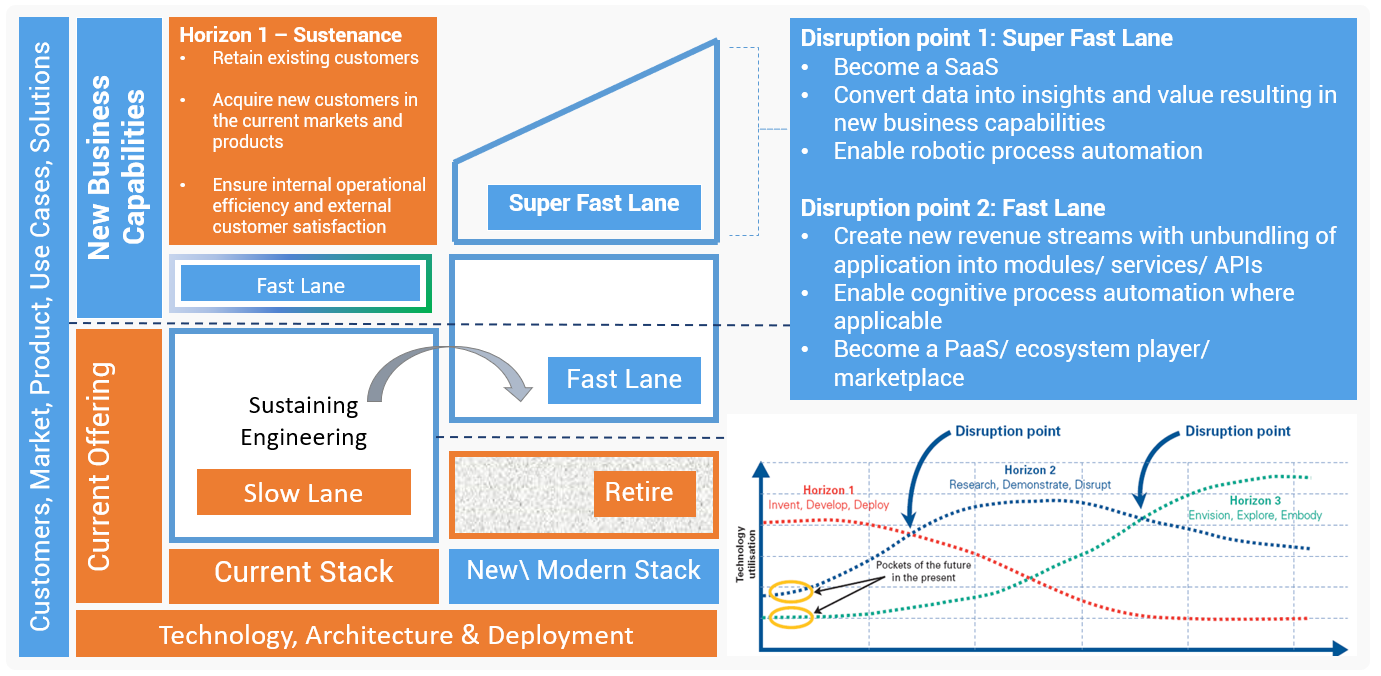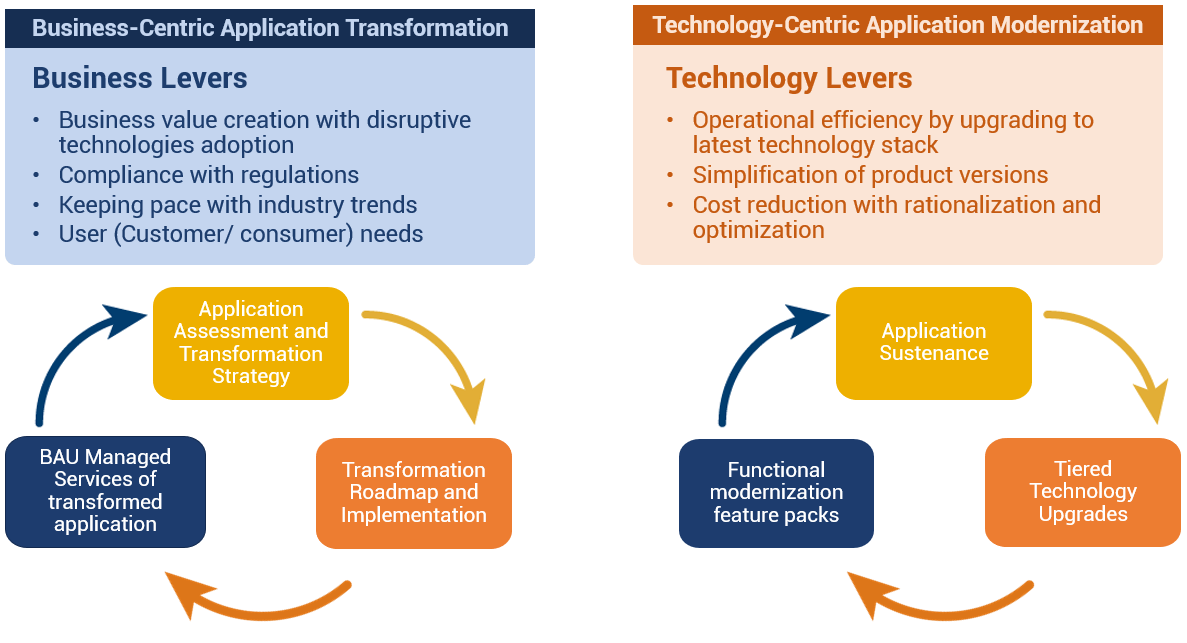While modernization focuses on sustaining existing business and meeting the needs of current customers in a catch-up mode, application transformation takes a fresh look at the product-market fit and explores new business opportunities with a long-term view. Transformation enables one to become a disruptor and a game-changer.
Continuous multi-speed, multi-horizon application transformation
Multi-speed IT delivery is required to support customers and prospects (innovators, early adaptors, etc.). Multi-horizon planning and delivery is required for swim-lane execution of multiple initiatives which will yield benefits at different times in the future.

Sustenance in slow lane
Supporting existing customers with the applications in production is as necessary as winning a new customer in order of magnitude. Sustaining engineering should be delivered with perfective maintenance, using the following principles:
- Deliver defect fixes with clean code and clean architecture principles
- Refactor code whenever possible
- Improve maintainability, changeability, documentation and migrate-ability
- Keep future business capabilities and target architecture
- Keep near zero effort migration approach
- Integrate with other solutions delivered in super-fast lane
Disruption in super-fast lane
Opportunities abound with business model innovation and adoption of digital technologies. In the super-fast lane, disruptive applications that can be created with new technology stack that are adjunct to the business capabilities of the core product are built fast and delivered as SaaS applications.
- Hosting the core product (financial SaaS) can be delivered to lock-in the customers with the core product.
- Data Science and Analytics wrapper and RPA wrapper for the core product can be delivered as Value added SaaS applications on the top of the hosted core product.
These options are just indicative and by no means exhaustive.
Disruption in fast lane
This may be compared with the traditional modernization, but the focus is business-centric, multiplatform, and continuous.
- Functionally decompose the application and develop a functionality baseline
- Develop new fine-grained services as appropriate
- Refactor application keeping in view the target application slowly into the intermediate stage and then to the final stage

- Improve performance, scalability, resiliency, security of the application to make it fully modern
Modernization versus Transformation
Transformation is business-led and strategic whereas modernization is technology-led and tactical. Transformation extends the life of the application way beyond what modernization can do. It creates new revenue streams for the business with new business value from data, business models and business capabilities support.

Below are the differences in transformation and modernization approaches in terms of intent, levers, and phases.

Conclusion
Software Businesses perform product portfolio assessment of their applications. The outcome of the assessment is an application classification matrix: sunset, sustain, modernize, and invest. For the last two options, businesses should :
- Take an outside-in business-centric view of the applications
- Develop multi-speed multi-horizon roadmap to deliver disruptive applications on a continuous basis
- Embrace Perfective Maintenance during sustaining engineering
Pursuing application transformation rather than application modernization is a futuristic and long-term approach that will yield enduring benefits.




